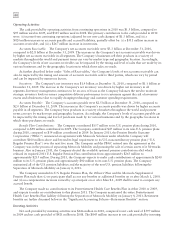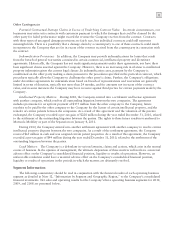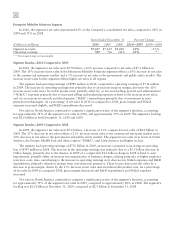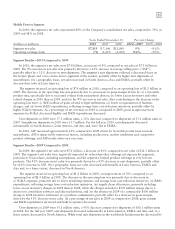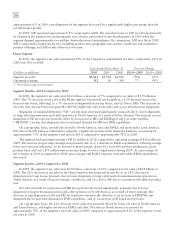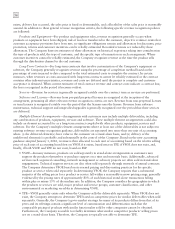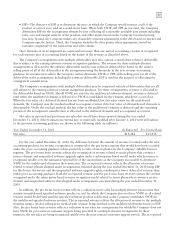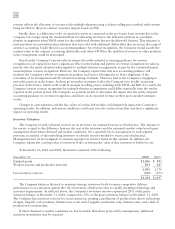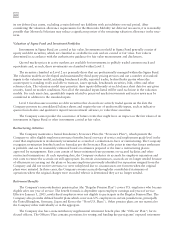Motorola 2010 Annual Report Download - page 59
Download and view the complete annual report
Please find page 59 of the 2010 Motorola annual report below. You can navigate through the pages in the report by either clicking on the pages listed below, or by using the keyword search tool below to find specific information within the annual report.
51
Other Contingencies
Potential Contractual Damage Claims in Excess of Underlying Contract Value: In certain circumstances, our
businesses may enter into contracts with customers pursuant to which the damages that could be claimed by the
other party for failed performance might exceed the revenue the Company receives from the contract. Contracts
with these types of uncapped damage provisions are fairly rare, but individual contracts could still represent
meaningful risk. There is a possibility that a damage claim by a counterparty to one of these contracts could result
in expenses to the Company that are far in excess of the revenue received from the counterparty in connection with
the contract.
Indemnification Provisions: In addition, the Company may provide indemnifications for losses that result
from the breach of general warranties contained in certain commercial, intellectual property and divestiture
agreements. Historically, the Company has not made significant payments under these agreements, nor have there
been significant claims asserted against the Company. However, there is an increasing risk in relation to intellectual
property indemnities given the current legal climate. In indemnification cases, payment by the Company is
conditioned on the other party making a claim pursuant to the procedures specified in the particular contract, which
procedures typically allow the Company to challenge the other party’s claims. Further, the Company’s obligations
under divestiture agreements for indemnification based on breach of representations and warranties are generally
limited in terms of duration, typically not more than 24 months, and for amounts not in excess of the contract
value, and in some instances the Company may have recourse against third parties for certain payments made by the
Company.
Intellectual Property Matters: During 2010, the Company entered into a settlement and license agreement
with another company, which resolves all outstanding litigation between the two companies. The agreement
includes provisions for an upfront payment of $175 million from the other company to the Company, future
royalties to be paid by the other company to the Company for the license of certain intellectual property, and the
transfer of certain patents between the companies. As a result of this agreement and the valuation of the patents
exchanged, the Company recorded a pre-tax gain of $228 million during the year ended December 31, 2010, related
to the settlement of the outstanding litigation between the parties. The rights to these future royalties transferred to
Motorola Mobility as part of the Separation on January 4, 2011.
During 2010, the Company entered into another settlement agreement with another company to resolve certain
intellectual property disputes between the two companies. As a result of the settlement agreement, the Company
received $65 million in cash and was assigned certain patent properties. As a result of this agreement, the Company
recorded a pre-tax gain of $94 million during the year ended December 31, 2010, related to the settlement of the
outstanding litigation between the parties.
Legal Matters: The Company is a defendant in various lawsuits, claims and actions, which arise in the normal
course of business. In the opinion of management, the ultimate disposition of these matters will not have a material
adverse effect on the Company’s consolidated financial position, liquidity or results of operations. However, an
unfavorable resolution could have a material adverse effect on the Company’s consolidated financial position,
liquidity or results of operations in the periods in which the matters are ultimately resolved.
Segment Information
The following commentary should be read in conjunction with the financial results of each operating business
segment as detailed in Note 12, “Information by Segment and Geographic Region,” to the Company’s consolidated
financial statements. Net sales and operating results for the Company’s three operating business segments for 2010,
2009, and 2008 are presented below.





